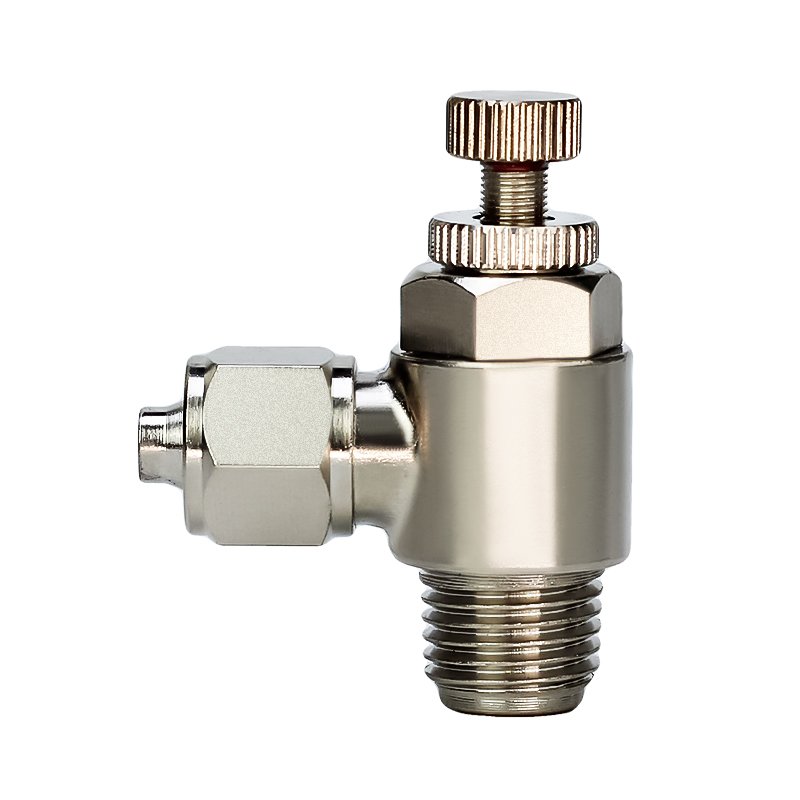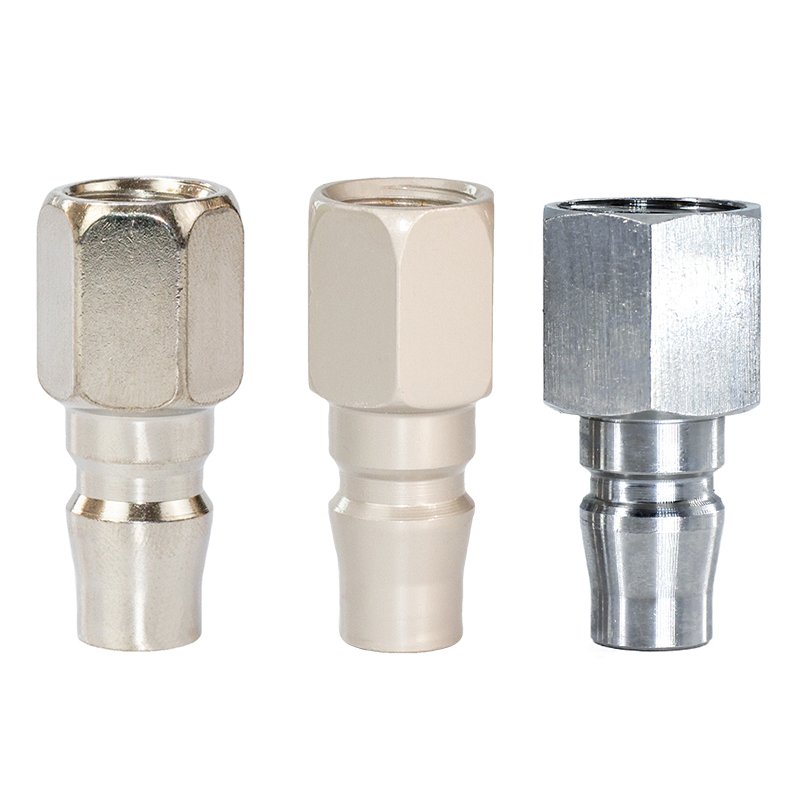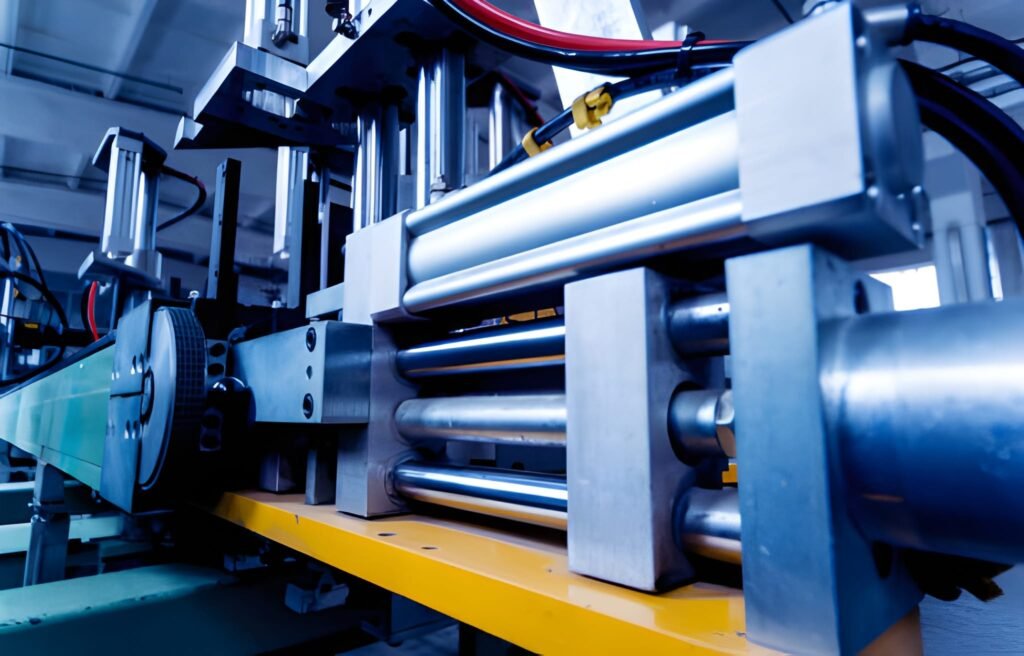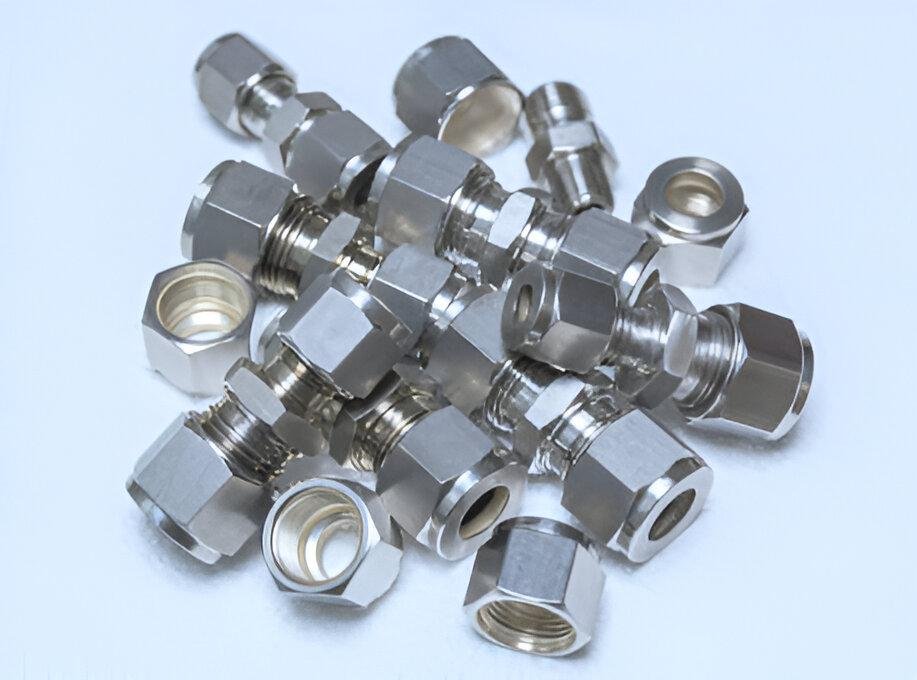Introduction to copper barb connectors and their importance
The copper barb connectors is a common and widely used pipe connector, usually used to connect hoses and piping. It features a barb-shaped design that can be firmly embedded in the hose to prevent the hose from slipping during use.
The copper barb connector is made of high-quality copper material with high corrosion resistance and durability. Its design is simple but powerful, and it tightly grasps the hose through the barb structure, so that it can maintain a stable connection in high-pressure or vibration environments.
Importance in Industry
- Reliability and durability: Due to the excellent corrosion resistance of copper, copper barb connectors perform well in various harsh industrial environments, especially in fields such as chemicals, oil and gas that require high durability.
- Wide range of applications: Copper barb connectors are suitable for hoses and pipes of various materials, including plastic, rubber and metal hoses, to meet the needs of different industrial applications.
- Easy operation: The installation of copper barb connectors does not require special tools, and can be completed by manual operation, saving installation time and labor costs and improving work efficiency.
- High safety: Its strong connection characteristics ensure that the hose will not fall off under high pressure conditions, avoiding safety hazards caused by leakage or breakage.

Types of copper barb connectors
There are many types of copper barb connectors. According to the different materials, specifications and sizes, they can be divided into the following main types:
1. Material Difference
Copper barb connector
- Features: strong corrosion resistance, good thermal conductivity, and high pressure resistance.
- Application: Widely used in industrial fields that require high strength and durability, such as petrochemical, pharmaceutical and food processing industries.
Plastic barb connector
- Features: light weight, good corrosion resistance, and low cost.
- Application: Suitable for low-pressure and non-critical connection occasions, such as garden irrigation systems and domestic water connections.
Stainless steel barb connector
- Features: It has extremely strong corrosion resistance and high temperature resistance.
- Application: Suitable for connections in harsh environments, such as marine equipment and high-temperature equipment.
Nickel-plated copper barb connector
- Features: A nickel-plated layer is added to the copper to improve wear resistance and oxidation resistance.
- Application: Suitable for occasions that require additional wear resistance and oxidation resistance, such as mechanical processing equipment.
2. Specifications and Sizes
Copper barb connectors are available in a variety of specifications and sizes to meet the needs of different pipe connections. Common specifications and sizes include:
Pipe diameter
- Small pipe diameter: suitable for connecting hoses with smaller diameters, usually between 6mm and 12mm, suitable for connecting small pipes, such as laboratory equipment and small industrial equipment.
- Medium pipe diameter: suitable for connecting hoses with medium diameters, usually between 12mm and 25mm, suitable for ordinary industrial equipment and home use.
- Large pipe diameter: suitable for connecting hoses with larger diameters, usually above 25mm, suitable for large industrial equipment and municipal engineering.
Length and thread
- Length: The length of the barb connector varies according to the needs of the pipe connection, usually ranging from 20mm to 100mm, to ensure sufficient embedding depth and connection strength.
- Thread type: There are two types of metric threads and imperial threads. When choosing, you need to match them according to the thread standard of the pipe.
Working principles and advantages of copper barb connectors
Working Principle
The design of the copper barb connector is based on a simple and effective physical structure. Its main working principle is as follows:
- Barb design: There are multiple barbs on the connector, which will embed into the inner wall of the hose after the connector is inserted into the hose. This design uses friction and mechanical bite force to ensure that the hose will not fall off easily.
- Tight fit: The size and shape of the barb are precisely designed to fit tightly with the inner wall of the hose to form a strong connection. During the connection process, the barb slightly compresses the hose material, thereby increasing the stability of the connection.
- Pressure distribution: When the barb of the connector is stressed, it will evenly distribute the pressure over the entire connection area of the hose to avoid damage to the hose due to excessive stress at a single point.
Advantages
- Simple physical structure: The design of the copper barb connector is very simple, and it mainly relies on the friction and bite force between the barb and the hose for connection. No complex mechanical devices or tools are required, and the operation is simple and efficient.
- Strong connection: The barb structure provides extremely strong connection force to ensure that the hose will not fall off in high pressure or high vibration environments. This design makes it perform well in situations where high reliability is required, such as industrial piping systems.
- Durability: Copper material has excellent corrosion resistance and durability, can be used for a long time in harsh environments, and reduces the frequency of replacement and maintenance.
- Versatility: Suitable for a variety of hose materials, such as plastic pipes, rubber pipes and metal pipes, and can be applied to a variety of fluid media, including liquids and gases.
- Easy installation: No special tools are required, and installation can usually be completed manually, which greatly saves time and labor costs and improves work efficiency.
- Safety: The firmness and durability of the connector ensure the safe operation of the pipeline system and avoid leakage or other safety accidents caused by hose detachment.
How to choose the right copper barb connector
Choosing the right copper barb connector requires comprehensive consideration of the pipe material, size, and specific application scenarios. The following is a detailed selection guide:
1. Choose according to pipe material and size
Pipe material
- Plastic pipe: For plastic hoses, choose copper barb connectors with larger barbs to ensure a tight bite and prevent slippage.
- Rubber pipe: Rubber pipes are usually softer, so you can choose connectors with slightly smaller barbs to prevent damage to the pipe wall while still maintaining a secure connection.
- Metal pipe: Metal pipes require stronger connection force, so you should choose connectors with multiple barbs and precise dimensions to ensure stability and durability.
Pipe size
- Small diameter pipe: For pipes with smaller diameters, choose a suitable small copper barb connector, usually between 6mm and 12mm, to ensure that the connector can be inserted and fit tightly.
- Medium diameter pipe: Medium diameter pipes are suitable for medium-sized connectors, usually between 12mm and 25mm, to provide sufficient connection strength.
- Large diameter pipe: Large diameter pipes require large connectors, usually above 25mm, to ensure reliable connection under high pressure and high flow conditions.
2. Consideration of application scenarios
Water transmission
- Household water supply system: Choose copper barb connectors with strong corrosion resistance to ensure safety and reliability in long-term use.
- Industrial cooling system: Choose connectors that are resistant to high pressure and high temperature to ensure stability in harsh environments.
Gas transmission
- Compressed air system: Choose copper barb connectors with good sealing and pressure resistance to prevent gas leakage.
- Gas pipeline: Choose copper barb connectors that meet relevant safety standards to ensure safety in high pressure and flammable environments.
Special liquid transmission
- Chemical liquid: Choose copper barb connectors with extremely high corrosion resistance, such as nickel-plated copper, to ensure durability in chemical transmission.
- Food and beverage transmission: Choose copper barb connectors that meet food grade standards to ensure that the transmitted medium is not contaminated.

Common application areas
Copper barb connectors are widely used in many fields due to their reliability and versatility. The following are its common applications in medical equipment, automotive industry, home and gardening:
1. Medical equipment
- Infusion system: Copper barb connectors are used to connect infusion tubes and other medical hoses to ensure stability and safety during infusion.
- Ventilators and oxygen inhalation equipment: Connect gas delivery pipelines to ensure the safe delivery of oxygen and other gases.
- Medical instruments: Used for fluid connection in various diagnostic and treatment equipment to ensure the normal operation and accuracy of the equipment.
2. Automotive industry
- Fuel system: Copper barb connectors are used to connect fuel lines to ensure the safe transmission of fuel under high pressure conditions.
- Cooling system: Connect coolant pipelines to ensure the normal operation of the engine cooling system and prevent overheating.
- Braking system: In pneumatic and hydraulic braking systems, copper barb connectors ensure the stable transmission of brake fluid and improve the safety of the braking system.
3. Home use
- Plumbing system: Used for the connection of household water supply pipes and heating pipes to ensure a stable supply of water and hot water.
- Gas equipment: Connect household gas pipes and gas appliances to ensure the safe use of gas.
- Appliance connection: In home appliances such as washing machines and dishwashers, copper barb connectors are used for hose connection to ensure the normal operation of the equipment.
4. Gardening Uses
- Irrigation System: Copper barb connectors are widely used in gardening irrigation systems to connect hoses and nozzles to ensure stable and evenly distributed water flow.
- Hydroponic Equipment: In hydroponic planting systems, water pipes and nutrient solution supply pipes are connected to ensure that plants get sufficient water and nutrients.
- Gardening Tools: Hoses used to connect various gardening tools and equipment to improve the convenience and efficiency of tool use.
Copper barb connectors are widely used in medical equipment, automotive industry, home and gardening for their durability and reliability. In each application scenario, copper barb connectors play a key role to ensure the stable operation and safe use of the system. By choosing the right connector, the performance and service life of various equipment and systems can be effectively improved.







